PA5-59392
antibody from Invitrogen Antibodies
Targeting: ACSS1
ACAS2L, AceCS2L, dJ568C11.3, MGC33843
Antibody data
- Antibody Data
- Antigen structure
- References [1]
- Comments [0]
- Validations
- Immunohistochemistry [5]
- Other assay [1]
Submit
Validation data
Reference
Comment
Report error
- Product number
- PA5-59392 - Provider product page

- Provider
- Invitrogen Antibodies
- Product name
- ACSS1 Polyclonal Antibody
- Antibody type
- Polyclonal
- Antigen
- Recombinant protein fragment
- Description
- Immunogen sequence: IFAGFSAESL AGRINDAKCK VVITFNQGLR GGRVVELKKI VDEAVKHCPT VQHVLVAHRT DNKVHMGDLD VPLEQEMAKE DPVCAPESMG SEDMLFML Highest antigen sequence identity to the following orthologs: Mouse - 90%, Rat - 90%.
- Reactivity
- Human
- Host
- Rabbit
- Isotype
- IgG
- Vial size
- 100 μL
- Concentration
- 0.4 mg/mL
- Storage
- Store at 4°C short term. For long term storage, store at -20°C, avoiding freeze/thaw cycles.
Submitted references Acetyl-CoA synthetase 3 promotes bladder cancer cell growth under metabolic stress.
Zhang J, Duan H, Feng Z, Han X, Gu C
Oncogenesis 2020 May 12;9(5):46
Oncogenesis 2020 May 12;9(5):46
No comments: Submit comment
Supportive validation
- Submitted by
- Invitrogen Antibodies (provider)
- Main image
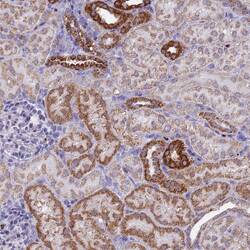
- Experimental details
- Immunohistochemical analysis of ACSS1 in human kidney using ACSS1 Polyclonal Antibody (Product # PA5-59392) shows strong granular cytoplasmic positivity in cells in tubules.
- Submitted by
- Invitrogen Antibodies (provider)
- Main image
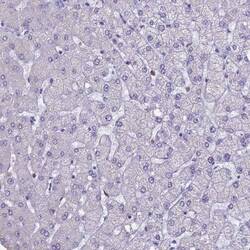
- Experimental details
- Immunohistochemical analysis of ACSS1 in human liver using ACSS1 Polyclonal Antibody (Product # PA5-59392) shows no positivity in hepatocytes as expected.
- Submitted by
- Invitrogen Antibodies (provider)
- Main image
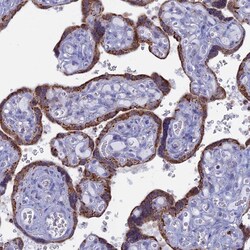
- Experimental details
- Immunohistochemical staining of ACSS1 in human placenta using ACSS1 Polyclonal Antibody (Product # PA5-59392) shows high expression.
- Submitted by
- Invitrogen Antibodies (provider)
- Main image
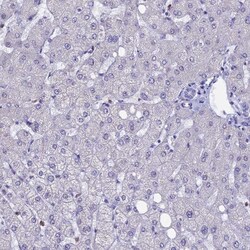
- Experimental details
- Immunohistochemical staining of ACSS1 in human liver using ACSS1 Polyclonal Antibody (Product # PA5-59392) shows low expression as expected.
- Submitted by
- Invitrogen Antibodies (provider)
- Main image
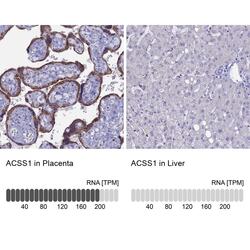
- Experimental details
- Immunohistochemical staining of ACSS1 in human placenta and liver tissues using ACSS1 Polyclonal Antibody (Product # PA5-59392). Corresponding ACSS1 RNA-seq data are presented for the same tissues.
Supportive validation
- Submitted by
- Invitrogen Antibodies (provider)
- Main image
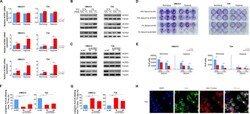
- Experimental details
- Fig. 2 ACSS3 is induced under metabolic stress and facilitate BLCA cell growth. a ACSS1, ACSS2, and ACSS3 mRNA expression levels in BLCA cells under normoxia (21% O 2 ) or hypoxia (1% O 2 ) culture with 10% or 1% serum levels. b ACSS1, ACSS2, and ACSS3 protein expression levels in BLCA cells under normoxia (21% O 2 ) or hypoxia (1% O 2 ) culture with 10% or 1% serum levels. c ACSS1, ACSS2, and ACSS3 protein expression levels in BLCA cells transfected with control of ACSS3 siRNA. d Colony formed from BLCA cells transfected with control of ACSS3 siRNA under indicated culture situations. e Cell number of BLCA cells transfected with control of ACSS3 siRNA under indicated culture situations after 48 h incubation. f Percentage of lipogenic AcCoA generation from acetate (labeled by 13 C) in BLCA cells transfected with control of ACSS3 siRNA under hypoxia (1% O 2 ) culture. g Percentage of lipogenic AcCoA generation from glutamine or glucose (labeled by 13 C) in BLCA cells transfected with control of ACSS3 siRNA under hypoxia (1% O 2 ) culture. h Subcellular localization of ACSS3-Myc expressed in T24 cells. ACSS3 was detected with anti-myc antibody. Mitochondria was stained with MitoTracker.
 Explore
Explore Validate
Validate Learn
Learn Western blot
Western blot Immunohistochemistry
Immunohistochemistry